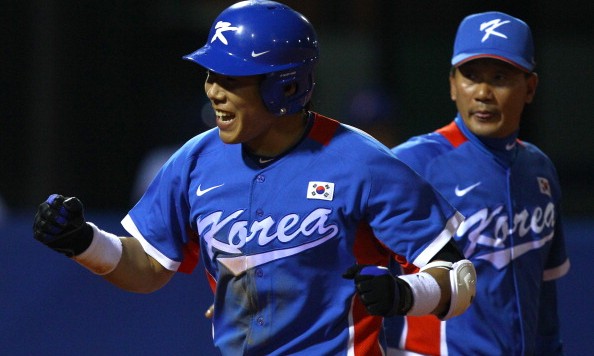The Pirates officially announced this morning that they’ve agreed to a four-year deal with Jung-ho Kang with the club holding a fifth year option for 2019. The money is being officially reported as a four-year/$11 million deal with a $5.5 million option for a fifth year. That seems a bit low, but it’s worth keeping baseball’s goofy salary structure in mind, because it’s structured to let Kang hit free agency a year or two early, should he play well enough to be able to cash in on that. As a point of comparison, the Dodgers paid a posting fee almost five times as high for Hyun-jin Ryu as what the Pirates paid for Kang, and they still signed him to a relatively limited salary (~$12 million) for what would have normally been his pre-arbitration years.
Anyway, we have the contract and we know that the Pirates plan to use him as a utilityman to open the season, so let’s talk a bit about Kang and how he might fit into that role as a big leaguer. Let’s start with Kang’s numbers and the difficulty with translating them into MLB numbers. Obviously his triple-slash line from last year (.356/.459/.739) and his 40 home runs get mentioned quite a bit, but then you also immediately get a comparison to big league players in Korea to try and give context. Eric Thames (21 home runs in 181 MLB games) hit 37 homers in the KBO last year. Yamaico Navarro (two homers in 79 MLB games) hit 31. Baseball in Korea is obviously very offense-oriented. Here’s the thing, though: since Kang is the first Korean position player to go from KBO to MLB and since the number of MLB players going to Korea in Japan is still relatively small, who knows exactly how that projection works on the extreme ends? It’s hard to do much better than .365/.459/.739 under just about any circumstances, so looking at how players like Thames and Navarro and Felix Pie hit in Korea is instructive in establishing a relative level of KBO performance (I think it’s generally pegged as about AA ball) right now, it might not help us project Kang specifically.
If I had to guess, based on reading a bit about Kang, looking at his numbers, and reading into the Pirates’ comments about him, I’d imagine they view him as looking pretty similar to Jordy Mercer at the plate with maybe a bit more power. Mercer has pretty decent right-handed pop for a shortstop, but he’s got a bit of a strikeout problem that creates a bit of a batting average problem that creates a bit of an OBP problem. Obviously, we won’t know until we get to see Kang in person against big league pitchers.
As far as Kang’s role, well, if 2014 taught anyone anything, it should’ve been the value of having a useful utility player on the roster. I’m not going to rehash the “most valuable” argument here again, but having Josh Harrison available to plug a few holes that otherwise might’ve gone unfilled made a huge difference for the Pirates last year. In fact, the Pirates have had quite a bit of infield turnover in the last two seasons: they began 2013 with Pedro Alvarez, Clint Barmes, Neil Walker, and Garrett Jones around the horn, and since then all of those positions have changed at least once besides second base. There’s a pretty good chance that Kang will get an extended shot to play somewhere in 2015, whether it’s because Josh Harrison or Jordy Mercer underperform or because Neil Walker got hurt or because the first base platoon turned out to be a total disaster. If Kang can hack it in MLB, we’ll find out one way or another.
Really, it seems to me like this is a relatively low-cost opportunity for the Pirates to expand their international borders and put some depth on their roster in a place that they need it (how many times have we all brought up the Morel/Nix/Martinez horror show since the season ended?). If things go poorly, they haven’t invested much. If things go well, this deal could be a steal for them.
Photo by Richard Heathcote/Getty Images




















